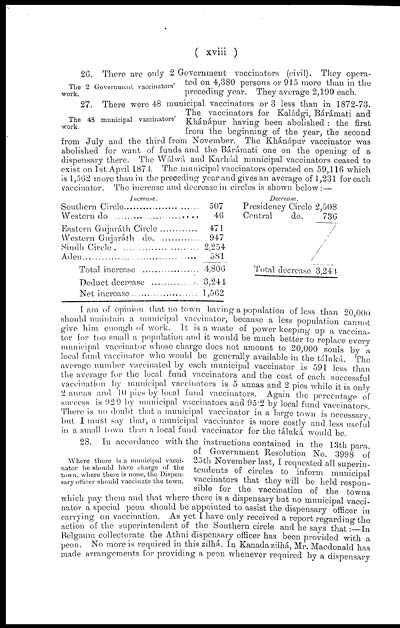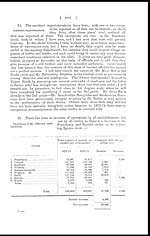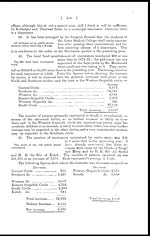Medicine - Vaccination > 1856-1876 - Report on vaccination throughout the Bombay Presidency and Sind > Vaccination in Bombay 1874-1876 > 1873-1874 - Report on vaccination throughout the Bombay Presidency and Sind for the year 1873-74
(34) Page xviii
Download files
Individual page:
Thumbnail gallery: Grid view | List view

( xviii )
The 2 Government vaccinators'
work.
26. There are only 2 Government vaccinators (civil). They opera-
ted on 4,380 persons or 915 more than in the
preceding year. They average 2,190 each.
The 48 municipal vaccinators'
work.
27. There were 48 municipal vaccinators or 3 less than in 1872-73.
The vaccinators for Kaládgi, Bárámati and
Khánápur having been abolished : the first
from the beginning of the year, the second
from July and the third from November. The Khánápur vaccinator was
abolished for want of funds and the Bárámati one on the opening of a
dispensary there. The Wálwá and Karhád municipal vaccinators ceased to
exist on 1st April 1874. The municipal vaccinators operated on 59,116 which
is 1,562 more than in the preceding year and gives an average of 1,231 for each
vaccinator. The increase and decrease in circles is shown below: —
|
Increase. |
Decrease. |
|
|
Southern Circle.............................. |
507 |
Presidency Circle 2,508 |
|
Westorn do .................................... |
46 |
Central do. 736 |
|
Eastern Gujaráth Circle.................. |
471 |
|
|
Western Gujaráth do..................... |
947 |
|
|
Sindh Circle................................. |
2,254 |
|
|
Aden............................................. |
581 |
|
|
Total increase................................. |
4,806 |
Total decrease 3,244 |
|
Deduct decrease .............. |
3,241 |
|
|
Net increase ................................. |
1,562 |
I am of opinion that no town having a population of less than 20,000
should maintain a municipal vaccinator, because a less population cannot
give him enough of work. It is a waste of power keeping up a vaccina-
tor for too small a population and it would be much better to replace every
municipal vaccinator whose charge does not amount to 20,000 souls by a
local fund vaccinator who would be generally available in the táluká. The
average number vaccinated by each municipal vaccinator is 591 less than
the average for the local fund vaccinators and the cost of each successful
vaccination by municipal vaccinators is 5 annas and 2 pies while it is only
2 annas and 10 pies by local fund vaccinators. Again the percentage of
success is 92.9 by municipal vaccinators and 95.2 by local fund vaccinators
There is no doubt that a municipal vaccinator in a large town is necessary,
but I must say that, a municipal vaccinator is more costly and less useful
in a small town than a local fund vaccinator for the táluká would be.
Where there is a municipal vacci-
nator he should have charge of the
town, where there is none, the Dispen-
sary officer should vaccinate the town.
28. In accordance with the instructions contained in the 13th para.
of Government Resolution No. 3998 of
25th November last, I requested all superin-
tendents of circles to inform municipal
vaccinators that they will be held respon-
sible for the vaccination of the towns
which pay them and that where there is a dispensary but no municipal vacci-
nator a special peon should be appointed to assist the dispensary officer in
carrying on vaccination. As yet I have only received a report regarding the
action of the superintendent of the Southern circle and he says that:—In
Belgaum collectorate the Athni dispensary officer has been provided with a
peon. No more is required in this zilhá. In Kanada zilhá, Mr. Macdonald has
made arrangements for providing a peon whenever required by a dispensary
Set display mode to: Large image | Zoom image | Transcription
Images and transcriptions on this page, including medium image downloads, may be used under the Creative Commons Attribution 4.0 International Licence unless otherwise stated. ![]()
| Permanent URL | https://digital.nls.uk/91027817 |
|---|
| Attribution and copyright: |
|
|---|---|




